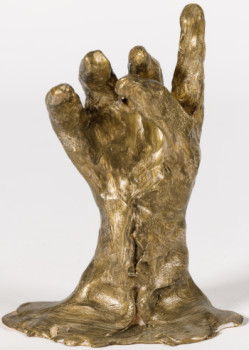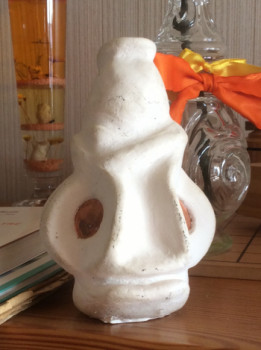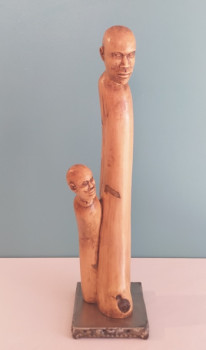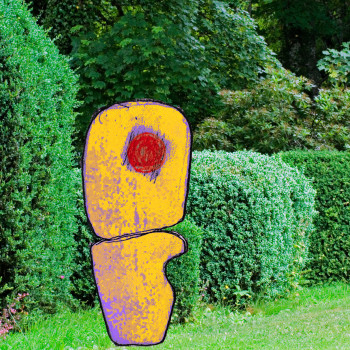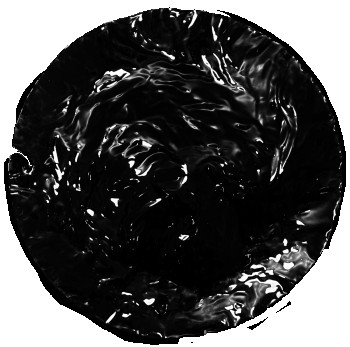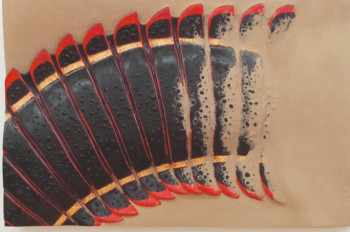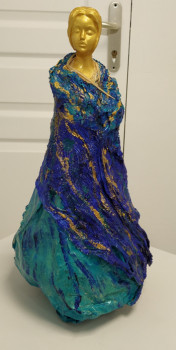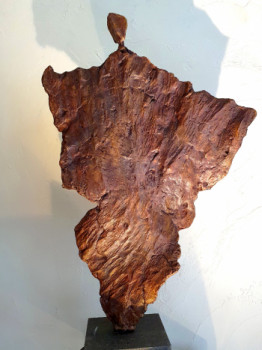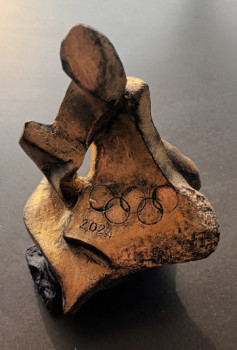
Baselitz, a painter-sculptor in search of disharmonieo

Considered a precursor of the German neo-expressionist movement, Georg Baselitz is a painter, but also a sculptor who seeks to test the limits of art contemporary. Let's discover this artist who, for more than 60 years, has examined themes that are both historical and personal.
Shocking images…
Né Hans-Georg Kern in 1938 in Nazi Germany, Baselitz grew up in Germany. Saxony under the communist regime of the German Democratic Republic (GDR). From the start of his career, Baselitz was interested in the tradition of painting German expressionist.
At the age of 18, he was sent back to prison. from the East Berlin Academy of Arts, after two semesters, for «immaturity’ sociopolitical». In 1957, he moved to Paris. West Berlin to study abroad the ’Academy of Arts. Very quickly, he starts to think about it. create his «hero paintings» in which they depict famous male figures in ruined mythical landscapes using thick imposto to evoke raw emotion. In 1963, he obtained his master's degree and took the name Baselitz, in reference to his birthplace Deutschbaselitz. The same year, he caused a new public scandal where he two of his paintings, deemed obscene, were seized by the public prosecutor during his personal exhibition. One of his works depicted a young boy, wearing a bobbed hairstyle. the Adolf Hitler, held a phallus (Die große Nacht im Eimer or The big night at the bottom of the sewer, 1963). This style of painting illustrates Baselitz's passion for creating disturbing and shocking images in order to provoke a reaction.
… In the tables at upside down
In 1965, Baselitz obtained a scholarship to study at the university. Florence. In 1969, having to with the heart of highlighting abstract qualities, Baselitz decides to exhibit iconic paintings in a public space. upside down to allow the viewer to concentrate on the purely pictorial aspects of the painting. Indeed, by being reversed, his subjects (characters, landscapes, etc.) distort the viewer's expectations, which invites him to respond. examine the painting more closely. Due to paint layers and splashes, Baselitz offers paints that produce high quality. intense. In this sense, it emerges from conceptual art, the dominant current of the time. Thanks to various exhibitions such as Documenta 5 and 7 (in 1972 and 1982), the Venice Biennale in 1980 or the exhibition A New Spirit in Paintingin 1981, Baselitz eventually acquired an international reputation. Furthermore, Baselitz is also known as a sculptor.
Modell für eine Skulptur the first work as a sculptor
Since the beginning of the 1980s, Baselitz has been producing monumental wooden sculptures representing figures and heads with unfinished and deliberate shapes. irregular regulations.
To realize his creations, this sculptor creates numerous drawings which are not preparatory sketches, but rather a way to search for an idea. As he states, « I have always followed an idea that ends differently», as the fifty-two drawings that this sculptor made to find the ideal physiognomy of Ding mit Asien . To create his imposing figures, this sculptor uses a chainsaw and an axe. This sculptor is inspired by popular art and tribal which he enriches with multiple Western references, believing that sculpture is «the shortest path» to answer fundamental questions. Modell für eine Skulptur (Model for a sculpture, 1979) represents his first work as a sculptor. Presented in June 1980, this first work by the sculptor is considered a «proposal for sculpture» in which he seeks disharmony. Indeed, the sculptor carved out wood with his ax in a crude and aggressive manner. This first work of this sculptor is strangely reminiscent of the lobi statuettes of Burkina Faso.
Baselitz, a sculptor like no other
Between the 1980s and the 1990s, Baselitz became popular. of a set of standing figures anthropomorphic sculptures. Towards the end of the 1980s, this sculptor created the series of Women of Dresden which represent around ten immense heads symbolizing the victims of the destruction of Dresden towards the end of the Second World War.
During the 1990s, this artist sculptor created large female figures that he dressed in folkloric costumes ( Mutter der Girlande and Mondrians Schwester). Due to their disproportionate size as well as the absence of feet, Baselitz seeks to create a certain disharmony.
Children's and autobiographical sculptures
In 2003, Baselitz produced Meine neue Mütze (My new cap). This sculpture, which aims to be a self-portrait, launches him into a series of immense sculptures with autobiographical references. With this series of sculptures, Baselitz escapes from irony and dresses his figures with burlesque costumes which gives us the impression of having to have to play a role. to do toys (sculptures in swimsuits, shorts that yawn, …). Painted in pink and blue, Baselitz clearly exploits the childish universe of his sculptures among which this sculptor slips numerous references such as a skull behind the back to symbolize Vanity ;, the famous five minutes to midnight indicated; on wrist watches, etc. In 2004, this artist sculptor received the Praemium Imperiale.
This sculptor artist created numerous personal exhibitions all over the world in recent decades. His most recent sculptures are large-scale self-portraits. the disproportionate size which, even if they evoke Rodin's The Thinker, have Christ as their model. These sculptures feature one of the «signs" of this artist sculptor: eyes composed of whitish drips.
Over the past few decades, this sculptor artist has had major solo exhibitions around the world and exhibits many times in the past. regularly in art galleries. London, New York, Paris, Salzburg and Berlin. Among other internationally renowned decorations, he received the Praemium Imperiale in 2004.
Découvrez quelques oeuvres inspirées de Baselitz
